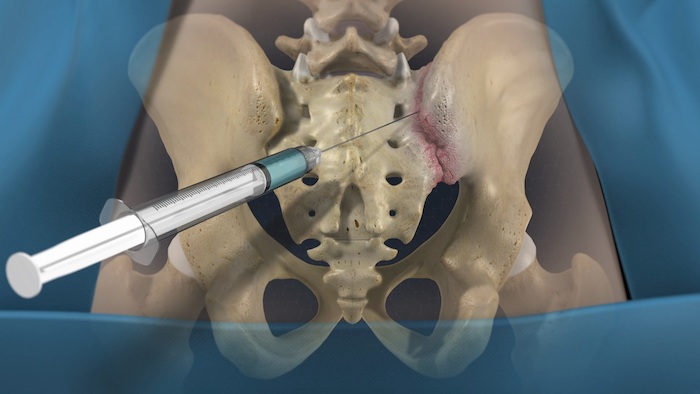
Treating Sacroiliac Joints
The sacroiliac joints are positioned on either side of the spine and are used to connect the sacrum (bone at the bottom of the spine) to the pelvis. Individuals who develop sacroiliac joint dysfunction can experience severe low back pain on one or both sides of the body. It is not always known why sacroiliac joint dysfunction occurs, but it can be extremely uncomfortable and can create significant inflammation in the affected joints. Dr. and his team provide sacroiliac joint injections as a way to both diagnose sacroiliac joint dysfunction and relieve the pain that is associated with it.
Common Symptoms & Candidacy Options
Candidates for sacroiliac joint injections would be any individual that has been diagnosed with sacroiliac joint dysfunction or is just experiencing symptoms that could be correlated to it.
Symptoms of sacroiliac joint dysfunction include:
- Lower back pain
- Pain in the hips, buttocks, or groin area
- Stiffness
- Unstable mobility of the joints
- Pain that worsens when applying pressure to the joint
How Sacroiliac Joint Injections Work
Sacroiliac joint injections are typically an outpatient procedure performed under general or local anesthesia. Dr. will begin the process by injecting a contrasting dye into the sacroiliac joint that he will monitor it with x-ray technology. This dye is used to spread the solution within the joint and needle placement. After the needle has been correctly placed, the diagnostic and/or treatment medication will be injected.
The treatment injection is an anti-inflammatory medication that is injected into the joint to help alleviate pain.
For the diagnostic test, a local anesthetic is injected into the joint, and the patient is asked to test the joint for any pain. There typically is a series of two different anesthetic injections that are done. If the pain is significantly decreased following each injection, then a diagnosis of sacroiliac joint dysfunction may be confirmed.
What to Expect Post-Procedure
Following the procedure, patients may need to be monitored for a short amount of time to make sure there are no complications. Patients can typically return home on the same day as their injections. Other recommendations and things to know for at-home care include:
- Be mindful of drinking plenty of water.
- Abstain from strenuous activities for the rest of the day.
- Expect to experience pain relief from the treatment within 3 – 5 days.
The longevity of treatment can last anywhere from several days to several months depending on the patient. Patients may receive additional injections if needed, but no more than three injections can be performed within a six-month period. In some cases, Dr. may also recommend physical therapy rehabilitation as a supplementary treatment after receiving sacroiliac joint injections.
Precision Pain Care and Rehabilitation has two convenient locations in Richmond Hill – Queens and New Hyde Park – Long Island. Call the Queens office at (718) 215-1888, or (516) 419-4480 for the Long Island office, to arrange an appointment with our Interventional Pain Management Specialist, Dr. Jeffrey Chacko.













